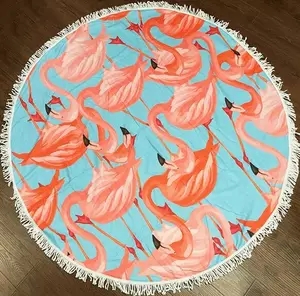Imagine lying on the beach towel without worrying about sand sticking to your skin. Sand-repellent beach towels have gained popularity due to their innovative technology that prevents sand from clinging to the fabric. But how do they work? Let’s explore the science behind these clever towels.
Fabric Structure: Sand-repellent beach towels are typically made from a tightly woven microfiber material. The tight weave reduces the gaps between fibers, making it difficult for sand particles to embed themselves.
Nano Coating: Some beach towels are treated with a nano-coating that creates a hydrophobic (water-repelling) and oleophobic (oil-repelling) surface. This coating prevents sand and other particles from adhering to the fabric.
Surface Tension: The hydrophobic properties of the nano-coating create a high surface tension on the towel’s surface. This tension causes sand particles to rest on top of the towel rather than sinking into the fabric.
Shake-Off Effect: When you shake a sand-repellent beach towel, the sand particles are dislodged due to the combination of the hydrophobic surface and the fabric’s structure. This “shake-off” effect is what allows the sand to be easily removed.
Maintenance: Over time, the nano-coating might wear off due to washing and use. Some manufacturers provide guidelines for reapplying the coating to maintain the towel’s sand-repellent properties.
Benefits: Sand-repellent beach towels not only keep you comfortable but also help keep your belongings sand-free. They are especially useful for picnics, sunbathing, and any activity where sand can be an annoyance.
While sand-repellent beach towels may not entirely eliminate sand, they significantly reduce its presence and offer a more enjoyable beach experience.







